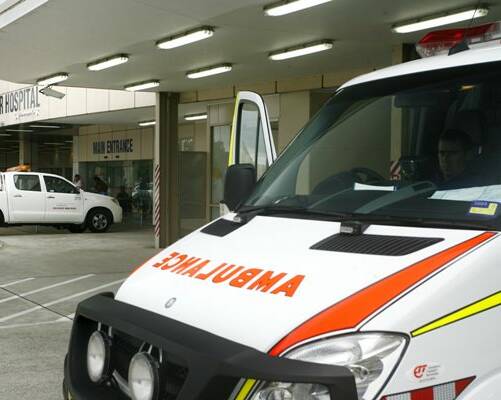
LIFE or death presentations to Hunter New England emergency departments have hit record highs while those languishing on surgical wait lists continues to grow.
More than 111,900 people attended emergency departments in the Hunter New England region in the three months to June 30.
A record number of those were "sicker and required more complex care" than ever before, local health district chief executive Tracey McCosker said today.
During the quarter, there were 14,805 emergency department presentations of people with an imminently life-threatening condition (triage category 2), .
That was the highest number of patients in that category in any quarter since the Bureau of Health Information began reporting in 2010, Ms McCosker said.
There was also a 25 per cent increase in the number of people who were critically ill/requiring immediate attention (triage category 1) when compared to the same time last year.
Most patients in this category arrive by ambulance, likely suffering from a critical injury or cardiac arrest.
Despite this increase in demand, the majority of patients (67 per cent) started their treatment on time, which is better than the NSW average (65.8 per cent), Ms McCosker said.
And to assist in improving flow through hospitals, a new process known as the 'District's Patient Flow Unit' has began trialling a 24/7 operation for a six-month period, she said.
"This change will mean patients can be transferred at all times, not just within business hours, assisting with capacity management to ensure better flow of patients through our facilities," Ms McCosker said.
All patients are seen and triaged on arrival at the emergency department and the most seriously unwell patients are treated first. During busy times, those with less urgent conditions will experience longer wait times when there are large numbers of seriously unwell patients being prioritised for emergency care, an HNEH statement said.
A total of 7,403 planned surgeries were performed across HNELHD during the quarter, an increase of 8.3 per cent, or 566 surgeries, compared with the same quarter last year. Almost all urgent planned surgeries (99.7 per cent) were performed on time.
However, the number of people "waiting longer than recommended" for semi-urgent and non-urgent surgeries increased by 45 per cent (94 people) and 49 per cent (178 people) respectively.
The increase in average wait times for semi-urgent operations blew out by eight days to nearly 12.5 days, while the average wait time for non-urgent surgeries was relatively static at just over nine months (or 278 days).
The number of people on the waitlist for semi-urgent surgery rose by 242, or 12.8 per cent, to a total of 2,135, while those sitting on the non-urgent surgical wait list grew by 304 people, or nearly 4 per cent.
Overall, there were 11,017 patients on a surgical wait list, up 4.8 per cent, or 507 patients, compared to the same quarter in 2022.
The region is home to the second longest wait lists in the state overall, as well as for specific procedures including cataract extraction, knee replacements, and inguinal herniorrhaphy (or hernia removal) with a total of 4579 people waiting their turn for those operations.
It is home to the longest queue for a hip replacement, with 410 patients in line for that, compared to the next closes LHD being South Western Sydney with 324.
"The District remains committed to providing timely access to care for our patients and will continue to focus on ensuring people who are overdue for a planned surgery receive it as soon as possible," the statement said.
Patients due to receive non-urgent planned surgery who have been impacted by previous planned surgery cessation restrictions are encouraged to seek medical attention should they experience a change in their condition so they can be clinically reviewed and re-prioritised to a more urgent category if required.
The Hunter New England Region also grappled with the highest number of overnight hospital stays in the state, and in increase of ten per cent on the previous quarter.
Acute hospital stays have increased by 14 per compared to five years ago - mental health bed stays have increased by nearly 30 per cent in just 12 months.







